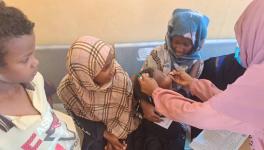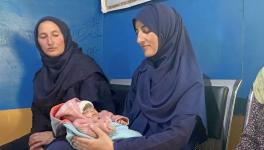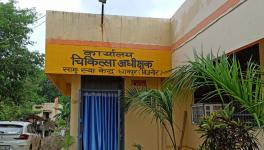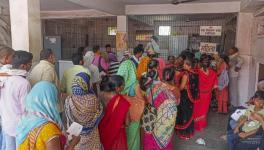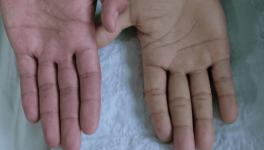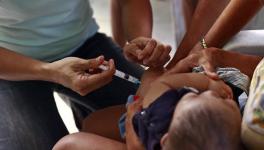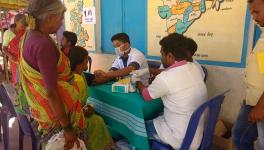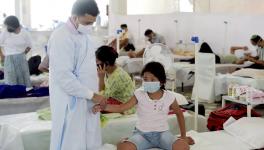2.9 million Children in India Missed Out First Dose of Measles Vaccine in 2017
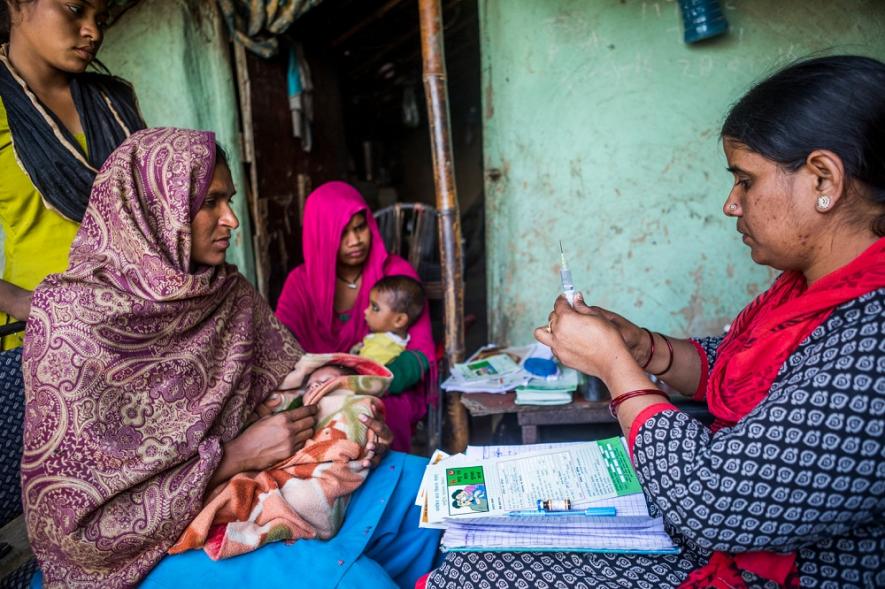
Image for representational use only. Image courtesy: UNICEF Connect
Amidst some deadly diseases making a comeback, a United Nations Children’s Fund (UNICEF) study revealed that about 2.9 million children in India have missed out on the first dose of the measles vaccine in 2017. Around the world, it is estimated that 169 million children missed out the first dose between 2010 and 2017 or 21.1 million children a year on average.
In the first three months of 2019, more than 110,000 measles cases have been reported worldwide – up nearly 300% from the same period last year. In 2017, about 110,000 people, most of them children, died of measles making a 22% increase as compared to the previous year. Two doses of the measles vaccine are essential to protect children from the disease. The global coverage of the first dose of the measles vaccine was reported at 85% in 2017, a figure that has remained relatively constant over the last decade despite population growth. Global coverage for the second dose is much lower, at 67%. The World Health Organisation recommends a threshold of 95% immunisation coverage to achieve so-called ‘herd immunity’.
According to the latest data, in high income countries, coverage for the first dose is 94%, while the coverage for the second dose drops to 91%. The United States tops the list of high-income countries with most children not receiving the first dose of the vaccine between 2010 and 2017, at more than 2.5 million. It is followed by France and the United Kingdom, with over 600,000 and 500,000 unvaccinated infants, respectively, during the same period. Argentina, Italy, Japan, Canada, Germany, Australia and Chile are there in the list of top ten high income countries with most number of unvaccinated children.
Also Read: General Program of Work as Strategic Priority For World Health Organization
In case of low and middle income countries, the situation is bit more critical. In 2017, Nigeria had the highest number of children under one year of age who missed out on the first dose, at nearly 4 million. It was followed by India, Pakistan and Indonesia (1.2 million each), and Ethiopia (1.1 million).
“Worldwide coverage levels of the second dose of the measles vaccines are even more alarming. Of the top 20 countries with the largest number of unvaccinated children in 2017, 9 have not introduced the second dose. Twenty-countries in sub-Saharan Africa have not introduced the necessary second dose in the national vaccination schedule, putting over 17 million infants a year at higher risk of measles during their childhood,” the report said.
Also Read: Interim Budget Reflects Push for Insurance-Based Health Care: JSA
Lack of access, poor health systems, complacency, and in some cases fear or skepticism about vaccines are the hindrances in the vaccination drive. Immunisation is considered as one of the most cost-effective interventions to prevent the suffering that comes from avoidable sickness, disability and death and the benefits of immunisation are not just restricted to improvements in health and life expectancy but have the social and economic impact at various levels.
“The ground for the global measles outbreaks we are witnessing today was laid years ago,” said Henrietta Fore, UNICEF Executive Director. “The measles virus will always find unvaccinated children. If we are serious about averting the spread of this dangerous but preventable disease, we need to vaccinate every child, in rich and poor countries alike.”
India has the largest number of births in the world – more than 26 million a year – and also accounts for more than 20% of child mortality worldwide. Nine million immunisation sessions are organised each year to target these infants and 30 million pregnant women are scheduled for routine immunisation.
Though some improvement has taken place in the past few years, the country still accounts for the largest number of children who are not immunised- 7.4 million. “Some of the challenges to immunisation include limited capacities of staff, particularly in poor-performing states and at the field level, and gaps in key areas such as predicting demand, logistics and cold chain management, which result in high wastage rates,” says UNICEF India.
In India, vaccination coverage varies considerably from state to state, with the lowest rates in India’s large central states. Differences in uptake depend on various factors including geographical, regional, rural-urban, poor-rich and gender. On average, girls receive fewer immunisation than boys and higher birth order infants have lower vaccination coverage. Rural children are least likely to have complete vaccination, and this inequity is most pronounced in states like Madhya Pradesh, Rajasthan, Chhattisgarh, Jharkhand, and Uttar Pradesh. The national average for full immunisation is 62% (NFHS 3).
Read More: Can Public-Private-Partnerships Help Stop Non-communicable Diseases?
Get the latest reports & analysis with people's perspective on Protests, movements & deep analytical videos, discussions of the current affairs in your Telegram app. Subscribe to NewsClick's Telegram channel & get Real-Time updates on stories, as they get published on our website.









